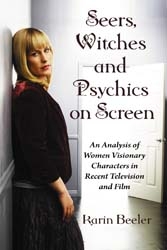 Another book that touches on the psychic realm caught my eye when thumbing through the catalog by McFarland. It is Seers, Witches and Psychics on Screen by Karin Beeler (McFarland, 2008). Beeler is an associate professor in the English department and Acting Director for the Centre for Teaching, Learning, and Technology at the University of Northern British Columbia in Prince George, Canada. She is also the author of Tattoos, Desire and Violence: Marks of Resistance in Literature, Film and Television (McFarland, 2006). Beeler carved out some time in her academic schedule to discuss Seers and the idea behind women visionary characters.
Another book that touches on the psychic realm caught my eye when thumbing through the catalog by McFarland. It is Seers, Witches and Psychics on Screen by Karin Beeler (McFarland, 2008). Beeler is an associate professor in the English department and Acting Director for the Centre for Teaching, Learning, and Technology at the University of Northern British Columbia in Prince George, Canada. She is also the author of Tattoos, Desire and Violence: Marks of Resistance in Literature, Film and Television (McFarland, 2006). Beeler carved out some time in her academic schedule to discuss Seers and the idea behind women visionary characters.
TheoFantastique: Karin, thank you making time in a busy academic schedule to discuss your book. How did you come to develop a personal interest in the topic of “visionary women’?
Karin Beeler: My interest in the topic of “visionary women” stems from my curiosity about alternative ways of “seeing” or “knowing.” I am interested in exploring how these alternative forms of perception challenge and sometimes even intersect with more established kinds of analysis. Institutionalized knowledge systems are often equated with the “rational” realm (e.g. science, technology). In other words, we live in an information age that appears to provide us with all the answers, and yet every once in a while we may need to acknowledge the need to shift our gaze and looking at things differently.
I think that the representation of visionary women in television and film serves as a way of exploring how different kinds of abilities can be expressed in societies that are attempting to recognize the plurality or hybridity of human experience. These images of women with visionary powers also extend the definition of heroism that has often been presented in the limited context of a physical, masculine power. These women use what has been traditionally conceived of as a passive power in an active way and offer different models of heroism in a postfeminist age. River Tam in Joss Whedon’s Firefly and Serenity, for example, is an interesting blend of a psychic and a woman warrior figure.
TheoFantastique:Can you define some of the forms of expression you explore in terms of the female visionary, and “third wave feminism” or “postfeminism”?
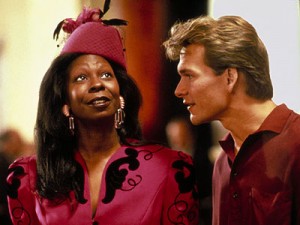 Karin Beeler:In this book I discuss the female visionary (seer, witch, psychic warrior, medium or psychic investigator) in the context of third wave feminism or postfeminism. Third wave feminism emerged in the late 1980s as a new generation’s response to some of the ideas of second wave feminism, and the term postfeminist is often used to discuss this new expression of feminism. I choose the terms “third wave feminism” and “postfeminism” synonymously to recognize the contradictions and diversity that can characterize feminine experience as represented in television and film about women with visionary powers. The female visionary in these visual media is by no means a homogeneous entity; she may take the form of an African-American woman like Oda Mae Brown in the film Ghostwho reinvents herself. The female visionary may be represented as a teenage psychic warrior Cassandra figure like River Tam in Firefly and Serenity, as a twenty-something witch and sister in Charmed, as a mother of three like Alison Dubois in Mediumor as a postfeminist savior like Tru Davies in Tru Calling; the latter experiences the rewinding of a day with all of the day’s predictable and unpredictable outcomes.
Karin Beeler:In this book I discuss the female visionary (seer, witch, psychic warrior, medium or psychic investigator) in the context of third wave feminism or postfeminism. Third wave feminism emerged in the late 1980s as a new generation’s response to some of the ideas of second wave feminism, and the term postfeminist is often used to discuss this new expression of feminism. I choose the terms “third wave feminism” and “postfeminism” synonymously to recognize the contradictions and diversity that can characterize feminine experience as represented in television and film about women with visionary powers. The female visionary in these visual media is by no means a homogeneous entity; she may take the form of an African-American woman like Oda Mae Brown in the film Ghostwho reinvents herself. The female visionary may be represented as a teenage psychic warrior Cassandra figure like River Tam in Firefly and Serenity, as a twenty-something witch and sister in Charmed, as a mother of three like Alison Dubois in Mediumor as a postfeminist savior like Tru Davies in Tru Calling; the latter experiences the rewinding of a day with all of the day’s predictable and unpredictable outcomes.
TheoFantastique: One of the characters you discuss is Cordelia Chase of Buffy the Vampire Slayer and Angel. How does her use of her visions represent empowerment and “hybridization”?
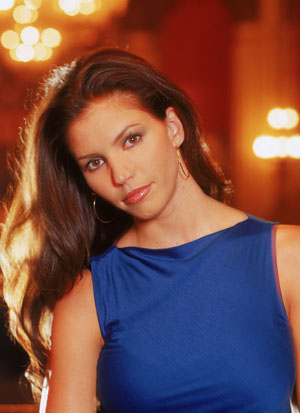 Karin Beeler: Cordelia is a character that has generated a good deal of critical interest by scholars and fans of the series Angel. She is often viewed as a disempowered character who plays second fiddle to the vampire Angel in the popular television series. While she is sometimes cast as the suffering seer figure reminiscent of Cassandra, I argue that she moves beyond this mythic prototype by crossing boundaries and identities, often to help others but also to help herself. For example, she chooses to become part-demon to alleviate the pain she experiences when she receives visions: “So, demonize me already” (“Birthday” 3.11). Throughout the series she occupies a morally ambiguous or “in-between” space partly because of her ironic remarks, which also establish her hybrid identity. When she is possessed by the demonic entity known as Jasmine, she acquires yet another new identity. When Cordelia gives birth to Jasmine who appears as a kind of supernatural light, Cordelia may symbolize the kinds of alternatives available to women in a postfeminist reproductive era, from adoption to surrogate motherhood.
Karin Beeler: Cordelia is a character that has generated a good deal of critical interest by scholars and fans of the series Angel. She is often viewed as a disempowered character who plays second fiddle to the vampire Angel in the popular television series. While she is sometimes cast as the suffering seer figure reminiscent of Cassandra, I argue that she moves beyond this mythic prototype by crossing boundaries and identities, often to help others but also to help herself. For example, she chooses to become part-demon to alleviate the pain she experiences when she receives visions: “So, demonize me already” (“Birthday” 3.11). Throughout the series she occupies a morally ambiguous or “in-between” space partly because of her ironic remarks, which also establish her hybrid identity. When she is possessed by the demonic entity known as Jasmine, she acquires yet another new identity. When Cordelia gives birth to Jasmine who appears as a kind of supernatural light, Cordelia may symbolize the kinds of alternatives available to women in a postfeminist reproductive era, from adoption to surrogate motherhood.
TheoFantastique: In another section of your book you move to consideration of psychic women investigators. You write that there has been rise in women featured in this way in films between 1990 and 2007. To what do you attribute this rise of interest in the psychic or visionary woman?
Karin Beeler: The psychic investigator appears to be a paradoxical concept because the investigative process is often equated with the rational and the known while psychic experience has often been equated with the supernatural. The psychic investigator as presented in television and film culture combines a curious mixture of the “rational” and the “intuitive,” thus suggesting that “science” or technology alone cannot provide all of the answers. The psychic’s ability is legitimized in these representations because she validates certain emotional connections and experiences that the scientific establishment or police investigators might ignore. The “clues” that the psychic characters or individuals provide, offer an alternate way of seeing that empowers individuals not affiliated with a formal institution (e.g., the police force, the medical establishment). These investigators may have certain extraordinary abilities (e.g. psychic powers), but they are also presented as very ordinary people (mothers, wives) who want to help others in distress. The figure of the psychic investigator may also reflect the ease with which we move from one form of experience to another today — from “real” to virtual worlds, or from natural to supernatural contexts when we watch different television or film genres (documentary versus fantasy).
TheoFantastique: In your discussion of female psychic investigators you write that “psychic reality shows are a hybrid form or genre that creates a third space for women with alternative forms of knowledge and power.” How do you see female audience members appropriating or participating in this in their own lives?
Karin Beeler: A psychic reality show like the Canadian production Rescue Mediums creates an interesting blend of the “real” and the supernatural. Without carrying out a formal study of the television audience, it is difficult to say how many people watched the show because they believed in supernatural, psychic phenomena and felt that their own beliefs in the afterlife were validated or whether they watched the show for entertainment purposes because the format incorporates elements of other well known television genres (documentary, reality television, home living/domestically oriented television programs). While these kinds of psychic television programs may have their detractors, I would argue that these psychic reality shows can still encourage women in a number of positive ways; Rescue Mediums shows two women collaborating with one another and respecting one another’s abilities as they try to solve a mystery. Jackie and Christine, the two rescue mediums have their individual personalities, but they work together, thus espousing a post-feminist model of recognizing individual differences while also drawing strength from their joint efforts. Adopting a strategy of individual effort and cooperation with others is a model that women viewers may find valuable in solving problems in their own lives.
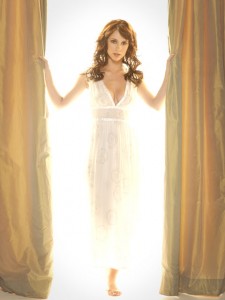 TheoFantastique: In another chapter you discuss the television program Ghost Whisperer. You write that in our post-9/11 world that the interest in such psychic scenarios may be due to our desire to have “some sense of closure” in regards to death and our relationship with lost loved ones. What kind of commentary might this be on the ways in which Americans process death and perhaps fail to make the most of our loved ones in the present?
TheoFantastique: In another chapter you discuss the television program Ghost Whisperer. You write that in our post-9/11 world that the interest in such psychic scenarios may be due to our desire to have “some sense of closure” in regards to death and our relationship with lost loved ones. What kind of commentary might this be on the ways in which Americans process death and perhaps fail to make the most of our loved ones in the present?
Karin Beeler: Some of the Ghost Whisperer episodes (“Free Fall” and “The One”) include storylines and images that echo the chilling events of September 11, 2001 when planes crashed into the Twin Towers in New York city. Even though these fictional Ghost Whisperer episodes have some supernatural content (with the appearance of “ghosts”), they probably resonate in a way that only American audiences can fully understand because of the way the population is still “haunted” by the memories of the 9/11 events. Ghost Whisperer and other series that involve the living and the dead searching for some kind of closure after experiencing a traumatic event reflect how people today need to take time to mourn and remember the past. For example, in this age of medical advances and high tech gadgets, death is sanitized and people are not given enough of an opportunity to mourn. At the same time, people who lose their loved ones also need some form of psychological closure to heal themselves. By focusing on the often traumatic experiences of the “dead” and their relationship to the living, a series such as Ghost Whisperer could be suggesting that Americans (and this probably applies to many other nations as well) should consider the importance of connecting with relatives and friends while they are still with us since life has an element of unpredictability. The events of 9/11 make us realize that any conversation we have with someone could be our last, so we should be mindful of how we communicate with others.
TheoFantastique: How do contemporary portrayals of visionary women in film and television compare to more ancient forms? What are the general similarities and differences?
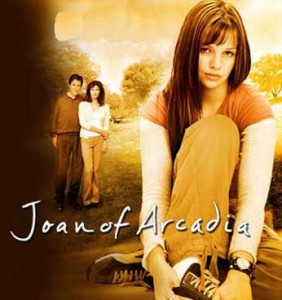 Karin Beeler:As someone with a background in comparative literary studies, I have always been interested in the connections between old and new ways of seeing. For example, I enjoy examining how ancient or medieval representations of the feminine (e.g., the figure of Cassandra and the figure of Joan of Arc) are re-inscribed or resisted in more recent narratives. I think that mythic or legendary characters offer powerful narratives and psychological insights into human behavior that still appeal to modern day audiences even though the specific manifestation of these truths may change across cultures and over time. Feminist theory and the validation of women in many different kinds of endeavors also allow us to create a greater variety of possibilities for women as characters in television and film. The figure of the Trojan seer Cassandra as represented in Greek literature, for example, has been constrained by the limitations placed on women in the patriarchal society of ancient Greece. As a result, she is often relegated to the status of the mad, marginalized woman whose life is defined by pain and disempowerment. Joan of Arc, was called a witch and burned at the stake; even though she was later recognized as a saint by the Church, her elevated status as an idealized woman still remains problematic. Contemporary portrayals of Cassandra or Joan of Arc figures often subvert limitations associated with these earlier images by showing how the modern representations resist patriarchal structures. That is not to say that the contemporary Cassandras like River in Firefly and Serenity and Joan of Arc figures like Joan in Joan of Arcadia or Jaye in Wonderfalls do not suffer; there is certainly an element of suffering because of their association with these mythical or legendary prototypes, but their difficulties are often lessened through the injection of humor or individual empowerment that allows them to experience a greater sense of agency.
Karin Beeler:As someone with a background in comparative literary studies, I have always been interested in the connections between old and new ways of seeing. For example, I enjoy examining how ancient or medieval representations of the feminine (e.g., the figure of Cassandra and the figure of Joan of Arc) are re-inscribed or resisted in more recent narratives. I think that mythic or legendary characters offer powerful narratives and psychological insights into human behavior that still appeal to modern day audiences even though the specific manifestation of these truths may change across cultures and over time. Feminist theory and the validation of women in many different kinds of endeavors also allow us to create a greater variety of possibilities for women as characters in television and film. The figure of the Trojan seer Cassandra as represented in Greek literature, for example, has been constrained by the limitations placed on women in the patriarchal society of ancient Greece. As a result, she is often relegated to the status of the mad, marginalized woman whose life is defined by pain and disempowerment. Joan of Arc, was called a witch and burned at the stake; even though she was later recognized as a saint by the Church, her elevated status as an idealized woman still remains problematic. Contemporary portrayals of Cassandra or Joan of Arc figures often subvert limitations associated with these earlier images by showing how the modern representations resist patriarchal structures. That is not to say that the contemporary Cassandras like River in Firefly and Serenity and Joan of Arc figures like Joan in Joan of Arcadia or Jaye in Wonderfalls do not suffer; there is certainly an element of suffering because of their association with these mythical or legendary prototypes, but their difficulties are often lessened through the injection of humor or individual empowerment that allows them to experience a greater sense of agency.
TheoFantastique: Karin, again, thank you for your time, and for your discussion of your book. I encourage others to pick up a copy.
Karin Beeler: Many thanks for giving me the opportunity to “speak” about my book.





3 Responses to “Karin Beeler: Seers, Witches and Psychics on Screen”